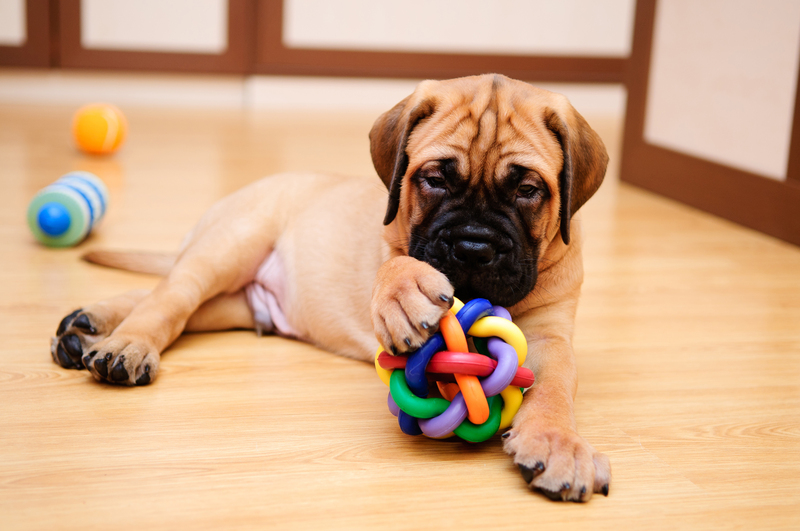Plastics to Avoid: Making Safer Choices for a Healthier Life
Plastics play a significant role in our everyday lives, from packaging food and beverages to household items and children's toys. However, not all plastics are safe for human health or the environment. Understanding which plastics to avoid and how to make safer choices is crucial for protecting your family and the planet. This comprehensive guide explores the dangerous plastics you should avoid, safer alternatives, and practical tips for reducing your plastic exposure.
Why Should You Care About Hazardous Plastics?
Over the past several decades, scientists have discovered that some plastics leach harmful chemicals, especially when exposed to heat, sunlight, or acidic substances. These chemicals--such as bisphenol A (BPA) and phthalates--have been linked to health issues like hormone disruption, developmental problems in children, and increased risk of chronic illnesses. Moreover, plastics persist in the environment for hundreds of years, threatening wildlife and contaminating oceans.
Understanding which plastics to avoid is the first step towards making healthier, eco-friendly choices.

Plastic Identification Codes: What Do Those Numbers Mean?
Most plastic products are stamped with a resin identification code--a number inside a recycling triangle--usually on the bottom of containers. This code indicates the type of plastic, its properties, and recommended usage. Here's a quick overview:
- 1: PET or PETE (Polyethylene Terephthalate) - Common in beverage bottles and food containers.
- 2: HDPE (High-Density Polyethylene) - Used in milk jugs, detergent bottles, and plastic bags.
- 3: PVC (Polyvinyl Chloride) - Found in pipes, cling wrap, and some bottles.
- 4: LDPE (Low-Density Polyethylene) - Bread bags, frozen food bags, flexible lids.
- 5: PP (Polypropylene) - Yogurt containers, straws, and bottle caps.
- 6: PS (Polystyrene) - Disposable cups, plates, take-out containers, packing peanuts.
- 7: Other (Miscellaneous plastics, includes PC, PLA, BPA-containing plastics) - Water cooler bottles, sippy cups, baby bottles, certain food containers.
Plastics to Avoid: The Most Harmful Types
Not all plastics are equally hazardous. Some types are far more likely to leach toxic chemicals and cause long-term problems. Here's a breakdown of plastics to avoid for health and environmental reasons.
1. PVC (Type 3) "The Poison Plastic"
Polyvinyl chloride, or PVC, is widely recognized as one of the most dangerous plastics. Often found in pipes, vinyl flooring, shower curtains, and some food packaging, PVC contains phthalates and often BPA--both of which are known endocrine disruptors.
- Health Risks: Studies link PVC chemicals to reproductive issues, hormone disruption, and increased cancer risk.
- Environmental Impact: PVC manufacturing produces dioxins, persistent environmental pollutants that can accumulate in the food chain.
- Common Uses: Plumbing pipes, clear food packaging, toys, blister packs, credit cards.
2. Polystyrene (Type 6) - "Styrofoam(TM)"
Polystyrene is used for disposable cups, takeout containers, and packing peanuts. When heated or exposed to oily foods, it can leach styrene--a possible human carcinogen--into food and drinks.
- Health Risks: Styrene exposure is linked to nervous system effects, headaches, and increased cancer risk.
- Environmental Impact: Polystyrene, especially in foam form, breaks into tiny microplastics that litter the environment and harm wildlife.
- Common Uses: Coffee cups, clamshell containers, egg cartons, disposable plates and cutlery.
3. Plastic #7 - "Other" (Often Polycarbonate, BPA-containing)
Type 7 plastics are a catch-all category that includes polycarbonate, bioplastics, and other plastics that don't fit in categories 1-6. Many contain BPA (bisphenol A), a well-known hormone disruptor.
- Health Risks: BPA exposure is linked with hormonal imbalance, reproductive disorders, heart disease, and developmental problems in infants and children.
- Common Uses: Water cooler bottles, reusable water bottles, food storage containers, sippy cups, some can linings.
Note: Some modern #7 plastics claim to be "BPA-free," but substitute chemicals like BPS or BPF may pose similar risks.
Plastics That Are Relatively Safer
Knowing the safest plastics helps reduce your exposure to hazardous materials. Generally, plastics with numbers 1, 2, 4, and 5 are considered less concerning, but they aren't entirely risk-free.
- PET or PETE (#1): Common in water and soda bottles. Intended for single use--reuse can increase leaching risk.
- HDPE (#2): Milk jugs, juice bottles, and some food containers. Low risk of leaching, especially if not exposed to high heat.
- LDPE (#4): Plastic bags, bread packaging, and food wraps. Generally considered safe but not suitable for microwaving.
- PP (#5): Yogurt cups, straws, bottle caps. Microwave-and dishwasher-safe, with low leaching risk.
However, it's always safer to minimize all plastic use, especially with food and beverages, to reduce chemical exposure.
Plastic Dangers: Understanding Chemical Leaching
Leaching occurs when plastic chemicals migrate into food or drinks, especially when plastics are heated, scratched, or used for acidic or fatty foods. Here's how it works:
- Hot liquids and foods increase the rate of chemical release from plastic.
- Microwaving or dishwashing plastic containers can cause micro-cracks, accelerating leaching.
- Exposure to sunlight or aging can break down plastic's structure, releasing toxins.
To make safer plastic choices, avoid using plastic containers for hot foods and beverages, and choose glass, stainless steel, or ceramic alternatives whenever possible.
BPA, Phthalates, and Other Harmful Additives
Two of the most concerning additives in plastics to avoid are BPA and phthalates. These are added for flexibility, durability, or clarity, but can migrate into food and drinks and disrupt hormone systems--especially in babies and young children.
- BPA: Found primarily in polycarbonate plastics and the linings of canned foods. Associated with infertility, obesity, diabetes, and behavioral issues in children.
- Phthalates: Used to soften plastics like PVC. Linked to asthma, ADHD, breast cancer, obesity, type II diabetes, and reduced male fertility.
Look for labels that specify BPA-free and phthalate-free--but remember that alternatives are not always proven safe.
Children's Products and Plastics: Special Cautions
Young children are especially vulnerable to harmful plastic chemicals. Toys, teethers, baby bottles, and sippy cups are often made from plastics that may contain BPA or phthalates. When shopping for children's products:
- Avoid any toys with #3 (PVC) or #7 (polycarbonate/BPA) recycling codes.
- Look for teethers and bottles labeled "BPA-free" and "phthalate-free," but prefer silicone, glass or stainless steel whenever possible.
- Never heat food or drinks in plastic baby bottles or sippy cups.
Safer Alternatives to Problematic Plastics
Making healthier choices often means swapping dangerous plastics for better options. Here's how you can minimize risk in your daily life:
- Use glass, stainless steel, or ceramic containers for food storage and beverages.
- Choose beeswax wraps or silicone lids instead of plastic wrap.
- Buy fresh produce and bulk goods to reduce plastic packaging.
- Prefer toys and household goods made from wood, metal, or fabric.
- Filter tap water and use a glass or steel bottle rather than plastic.
How to Identify Safer Plastics: A Practical Guide
Becoming a savvy shopper starts with knowing how to check products for potentially harmful plastics. Here's a step-by-step approach:
- Check the recycling code (usually stamped on the bottom). Avoid items marked #3 (PVC), #6 (polystyrene), or #7 (if not explicitly marked as a safe bioplastic like PLA).
- Read labels for "BPA-free" and "phthalate-free" claims.
- Don't rely only on the recycling code--some additives are not required to be labeled.
- When in doubt, opt for non-plastic alternatives.
Helpful Tips for Safer Everyday Choices
- Do not microwave or heat plastic containers, even if labeled "microwave safe."
- Replace old, scratched plastic containers--they are more likely to leach toxins.
- Store fatty, acidic, or salty foods in glass or ceramic.
- Choose jars and bottles with metal lids, not plastic.

Environmental Impact: Why It Matters to Avoid Bad Plastics
Plastic waste is a pressing issue worldwide. Problematic plastics like PVC and polystyrene are rarely recycled, linger as pollution, and often break down into microplastics that enter water, soil, and our food chain. Avoiding these plastics not only safeguards your health but also supports a cleaner environment.
- Polystyrene foam is nearly impossible to recycle and often ends up as persistent litter.
- PVC contains chlorine, creating toxic byproducts during manufacturing and disposal.
- Microplastics resulting from the breakdown of these plastics affect wildlife, marine health, and possibly human health.
Conclusion: Making Safe and Informed Choices
Choosing the right plastics--or, better yet, minimizing plastic use altogether--is crucial for your health and the health of our planet. By recognizing plastics to avoid like PVC, polystyrene, and BPA-containing types, and making conscious decisions for safer alternatives, you reduce exposure to harmful chemicals and contribute to a more sustainable world.
- Familiarize yourself with plastic identification codes.
- Avoid plastics marked #3, #6, and #7 (unless made from safe bioplastics).
- Use glass, stainless steel, and natural materials for food and drink.
- Support businesses and brands committed to safe, non-toxic packaging.
- Educate your family and community about the importance of safer plastic choices.
Your everyday actions make a difference. Start making safer plastic choices today--for your health and the future of our planet.